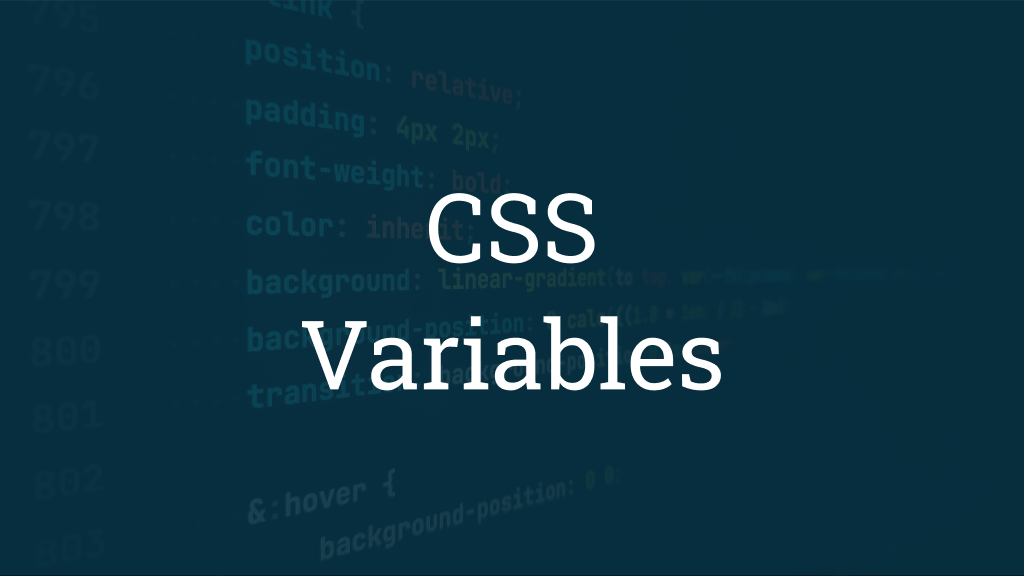Custom Properties in CSS: A Deep Dive into Variables and Their Applications

Cascading Style Sheets (CSS) variables, also known as Custom Properties, have revolutionized the way we manage and apply styles in web development. They offer versatility, reusability, and maintainability in your stylesheets. In this guide, we'll cover everything you need to know about CSS variables, from their definition to advanced usage.
What Are CSS Variables?
CSS variables, or Custom Properties, are placeholders for values that you can reuse throughout your stylesheet. They are denoted by names preceded by two hyphens, like --main-color or --font-size.
The Benefits of CSS Variables
CSS variables offer several benefits that enhance your web development process:
1. Reusability
CSS variables allow you to define a value once and use it multiple times, ensuring consistency throughout your stylesheet. For example, you can define a variable for a primary color and use it across various elements, making it easy to maintain a consistent color scheme.
:root {
--primary-color: #3498db;
}
button {
background-color: var(--primary-color);
}
a {
color: var(--primary-color);
}
2. Maintainability
Easily update values across your stylesheet by modifying a single variable. When you need to make changes, such as adjusting the primary color, you only need to modify the variable's value in one place, resulting in consistent changes throughout your site.
:root {
--primary-color: #3498db;
}
/* ... */
:root {
--primary-color: #e74c3c; /* Updated primary color */
}
3. Readability
Give meaningful names to your variables for better code comprehension. Descriptive variable names improve the clarity of your stylesheet, making it easier for you and your team to understand the purpose of each variable.
:root {
--primary-color: #3498db; /* Easily understood primary color */
}
Defining CSS Variables
To define a CSS variable, you typically declare it within a CSS rule set, often within the :root pseudo-class, which represents the highest-level element in the document (usually <html>). Here's how to define a CSS variable:
/* Definition of CSS variables within :root */
:root {
--main-color: #3498db;
--font-size: 16px;
--border-radius: 4px;
}
In this example, we've defined three variables: --main-color, --font-size, and --border-radius. These variables store a color, font size, and border radius, respectively.
How to Use CSS Variables
Once you've defined CSS variables, you can use them throughout your stylesheet by referencing their names with the var() function. Here's how to use CSS variables:
/* Using CSS variables */
button {
background-color: var(--main-color);
font-size: var(--font-size);
border-radius: var(--border-radius);
}
In this code snippet, we've applied the CSS variables to set the background-color, font-size, and border-radius properties for the button element. Using variables makes your styles more dynamic and easier to maintain.
Using Fallback Values
CSS variables can have fallback values to ensure compatibility with older browsers that do not support Custom Properties. To include a fallback value, you simply add it as a second argument within the var() function. If the variable is undefined or unsupported, the fallback value will be used.
/* Using fallback values */
button {
background-color: var(--main-color, #3498db); /* Fallback to #3498db if --main-color is undefined */
font-size: var(--font-size, 16px); /* Fallback to 16px if --font-size is undefined */
border-radius: var(--border-radius, 4px); /* Fallback to 4px if --border-radius is undefined */
}
Including fallback values ensures a graceful degradation of styles for older browsers while taking full advantage of CSS variables in modern ones.
Leveraging CSS Variables for Advanced Styling
Let's explore an advanced example to illustrate the power of CSS variables. Imagine you want to create a flexible card component with customizable colors and sizes:
/* Define CSS variables for the card component */
:root {
--card-bg-color: #ffffff;
--card-text-color: #333333;
--card-border-radius: 8px;
--card-padding: 16px;
}
.card {
background-color: var(--card-bg-color);
color: var(--card-text-color);
border-radius: var(--card-border-radius);
padding: var(--card-padding);
box-shadow: 0 4px 8px rgba(0, 0, 0, 0.2);
}
/* Usage of the card component with custom values */
.custom-card {
--card-bg-color: #3498db; /* Customize background color */
--card-text-color: #ffffff; /* Customize text color */
--card-border-radius: 12px; /* Customize border radius */
--card-padding: 20px; /* Customize padding */
}
In this example, we've defined CSS variables for a card component's background color, text color, border radius, and padding. The card component itself uses these variables. However, when we want to create a custom card with different styling, we redefine the variables within the .custom-card selector to override the default values. This approach demonstrates the extensibility and adaptability of CSS variables in complex scenarios.
In conclusion, CSS variables, or Custom Properties, are a valuable addition to your web development toolkit. They streamline your stylesheets, enhance maintainability, and empower you to create versatile and dynamic designs. Whether you're working on basic styles or complex components, mastering CSS variables can greatly improve your CSS workflow and code quality.